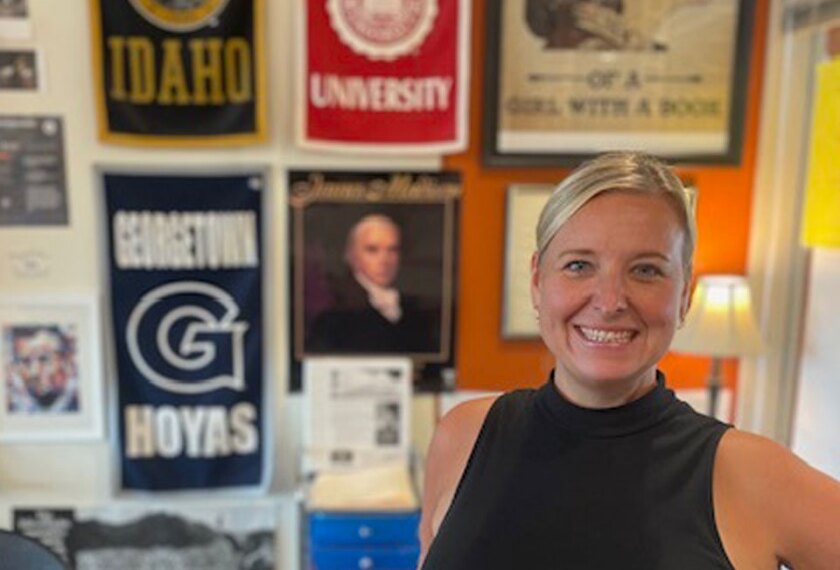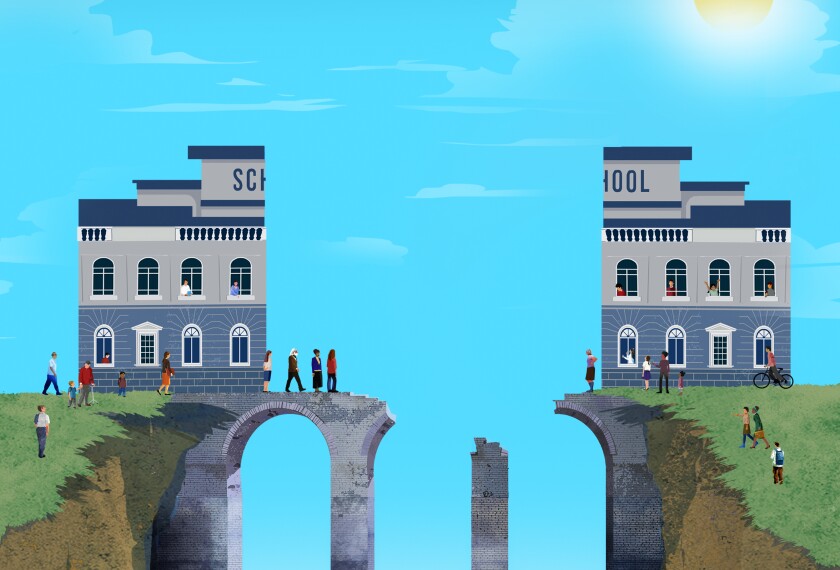At their best, classroom conversations can engage students, build communication and critical-thinking skills, and help students connect learning to their lives.
But so-called “outrage culture"—in which students react collectively in disproportionate and intensely negative ways during disagreements—can derail attempts to have substantive conversations about divisive or challenging topics.
Michael McQueen, a psychologist and the author of Mindstuck: Mastering the Art of Changing Minds, spoke with Education Week about ways educators can help defuse overreactions and outrage culture among students.
Why do we react so negatively when someone disagrees or we are told we are wrong?
The challenge is that our instinctive minds respond to psychological threats the same way they do physical threats. This [response to physical threats] has kept us alive for millennia: A tiger jumps out; you jump to a conclusion; you run, you defend yourself, you stay alive. That’s been great for us as a species. The challenge is that when our instinctive minds are confronted with ideas, information, perspectives, data that are confronting, uncomfortable, or unfamiliar, we respond in the same way.
But we don’t go into fight and flight. We go into denial or defensiveness.
These dynamics so often play out for all of us as humans, but particularly with young people who still don’t have [complete development of] that frontal part of their brain, which is where the more reasoned, measured, linear part of our thinking apparatus lives.
How can we help students develop a better approach to situations in which there will be disagreement and they might be wrong?
There’s such a readiness to label with clinical terms issues that are not—particularly the readiness for us to label students as having “anxiety” far too quickly where actually these conversations are just uncomfortable. We strengthen our cognitive muscles, we become well-rounded, thoughtful humans by being exposed to ideas and information that challenge us and even sometimes threaten us, make us feel uncomfortable. And so the bigger picture now—and this is where schools and parents need to be on the same page—is actually creating environments where it’s OK for people to feel uncomfortable and out of their comfort zone.
For students in particular, this idea of the goal being safety above all else is fundamentally ill-conceived. It’s leading to a lack of robustness and resilience in young people. The dark side is just reality; protecting people from that doesn’t make them stronger but actually makes them fundamentally less able to deal with the realities of life. … [But there are] teachers who are afraid to have these divisive conversations now, even though it’s the stuff that matters most for young people.
How can teachers establish structures for more difficult conversations with their students?
Life is complex and nuanced. And I think for teachers, one of the most important things they can do is to build the skill of intellectual curiosity and humility in young people.
One of the precursors is that sense of psychological safety—that if I acknowledge that I don’t know the answer, that I hadn’t thought this through, that there are things I doubt—that I’m safe enough to do that. I think teachers modeling this stuff is incredibly helpful. So a teacher may say, “You know what, this text we’re going to study—personally, I find this a really confronting text, but we’ll stick with that, and that will be OK.”
A lot of schools are trying to add specific instruction in social-emotional skills to their curriculum. Do you think that’s the best approach?
The tricky thing is often those lessons become principles in a vacuum. And so there’s not that connection between what I’m learning in math class and English and geography and the politics embedded in geography and history and how that plays into ideology.
Ideally, you want to arm [students] with not just a set of skills but a lens through which they see the world. And I think the best way to do that is to give them that lens to hold up every time they’re looking at any number of different topics or subject areas, rather than just describing a set of principles or ideas. Each time you [teach subject-matter content], there are micro-moments where you get the chance to model some of these principles and ideas [of civil disagreements and intellectual curiosity] and ask the questions that allow young people to think differently, to see those nuanced perspectives. If you separate it out as a class in its own right, it can all very quickly become ideas that make sense but don’t apply to something the students are living and seeing every day.
How can a teacher de-escalate a challenging conversation that has spiraled out of control?
We often assume that when someone doesn’t agree with us that there’s a knowledge gap; if we can just educate them better or give them more information or better data, they’ll see the light and they’ll change their perspective. That’s so often not the reality. And in fact the challenging thing is, [coming to agreement] is often about how do we address the things that are causing the other person to be stubborn, rather than trying to pile on more information or logic in a way that leaves them no option but to change their perspective.
There’re practical things you can do in that moment. First is not respond in kind from an emotional standpoint. Sometimes, we assume that we need to match someone’s emotional intensity if we’re going to have a robust conversation. But actually the best thing that a teacher can do is stay incredibly calm and … actually try to listen through, not listen to, what they’re saying, to find what’s going on that’s triggered this incredibly strong response, this defensiveness, or this defiance. People who are listened to are more likely to listen.
Disclaimer: The copyright of this article belongs to the original author. Reposting this article is solely for the purpose of information dissemination and does not constitute any investment advice. If there is any infringement, please contact us immediately. We will make corrections or deletions as necessary. Thank you.






